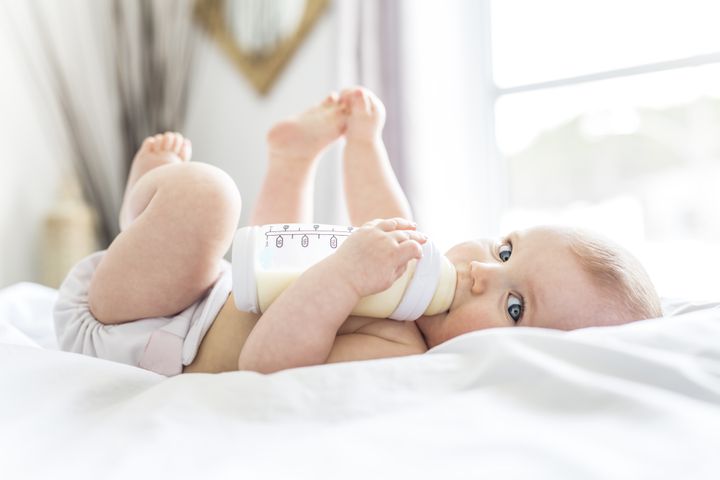
BPA impacts fertility more than you realize
BPA (2,2-bis(4-hydroxyphenyl) propane) or bisphenol A is a carbon-based synthetic compound that has been used in many household products since the 1950s. In recent years, serious concerns about BPA’s effects on reproduction has called into question it’s widespread use. BPA has been linked to infertility, miscarriage, and more, and legislation can be slow to catch up with scientific evidence when it comes to protecting consumers. In the case of BPA and your reproductive health, you should be your own advocate.
Tell me more about BPA?
BPA was manufactured as a synthetic estrogen for the pharmaceutical industry but was replaced by DES for use as a medication. This last sentence should really catch your attention since DES is diethylstilbestrol, a synthetic estrogen given to many pregnant women from 1940-1971 to prevent miscarriage and preterm labor, was banned for use in pregnant women in 1971 from use because daughters born after exposure to DES in pregnancy were born with significantly higher risk of uterine malformations and vaginal cancer. BPA, like DES, acts as an endocrine disrupter in many cells in our body.
Since the discovery of BPA as a powerful epoxy resin and use in polycarbonate plastics in the 1950s, production and use of this chemical has grown exponentially in the making of many household products. It is now one of the highest-volume chemicals produced worldwide, and it is estimated that over 100 tons of BPA are produced annually for use in plastic water bottles, baby bottles, lining of canned food, thermal receipts from cash registers, and more.
How does BPA affect reproductive health?
BPA is an endocrine disruptor; it binds to hormonal receptors and interferes with the function of reproductive hormones like estrogen and testosterone.[i],[ii] Up to 95% of residents in the United States will test positive for some amount of BPA in the bloodstream.[iii],[iv] Avoiding BPA is not only important while you are trying to conceive, but important while you are pregnant since 1) BPA has been found in amniotic fluid,[v] and 2) high levels of BPA exposure to the fetus may result in negative effects on the development of the brain and reproductive system.[vi],[vii]
As an estrogenic compound, BPA has been linked to many reproductive disorders such as polycystic ovarian syndrome, infertility, endometriosis, and thyroid disease.[viii] High levels of BPA in women have been associated with poor outcomes with in vitro fertilization (IVF),[ix],[x] including fewer eggs, fewer embryos, and lower live birth rates. Researchers have shown in mouse models that a low dose of BPA during the final stages of egg development can interfere with meiosis and result in chromosomal imbalances in the eggs.[xi] BPA has been found in follicular fluid surrounding developing eggs, endometrial tissue within the uterus, and in high levels in the urine of women with miscarriages.[xii] Some studies suggest the endocrine disruption of BPA may affect embryo implantation,[xiii] and other studies find that BPA may affect chromosomal function within eggs, leading to miscarriage.[xiv]
What is being done about BPA exposure for consumers?
Legislation is slow to catch up to evidence when it comes to consumer products and industry. In 2008, Canada labeled BPA as a reproductive toxin and limited it’s use in products and California banned it’s use in baby bottles, but this same year, the FDA (US Food and Drug Administration) put out a statement saying BPA is safe in limited amounts. Three long years later in 2011, the FDA banned the use of BPA in baby bottles and sippy cups (designed for young children). This is one positive step but BPA use in everyday items and especially items containing food remains alarmingly high.
The use of BPA in products we use is a heated debate: one side saying research shows reproductive harm and more limitations on use are imperative and the other side saying use in limited quantities is safe. Even if small quantities are safe – how can consumers ensure that their personal exposure is ‘safe?’ Until manufacturers stop using BPA in products, consumers need to educate themselves and consider limiting exposure on their own.
Ways to Limit BPA Exposure:
- Switch from a plastic to a stainless steel or glass water bottle, and switch from storing food and leftovers in plastic containers to glass or stainless steel options. Many plastics state that they are ‘BPA free,’ which is wonderful, but with other alternative such as glass and stainless steel, it may be safest to avoid plastic altogether if possible.
- If you do use plastic, avoid polycarbonate (labeled with a ‘7’), which is found in many hard, reusable plastic containers.
- If you can’t get rid of plastic containers then avoid heating plastics that touch food since heat allows the BPA and other potential toxins to leach from plastic containers straight into your food. Switch food from microwavable plastic containers you’re storing the food in to glass or ceramic before heating and eating. Do not put plastic in the dishwasher – hand wash it.
- Think about your coffee or tea makers – the popular pod system for making these warm beverages uses plastics to store the coffee or tea, and boiling water is pouring through the plastic right into your cup. Automatic coffee makers usually send hot water through plastics as well. Switch to a French press or pour-over system with glass for hot beverages and make tea the old-fashioned way with a kettle (it doesn’t take that long!).
- Limit canned food – switch to fresh or frozen options. If you do use canned food, make sure to get canned food that does not use BPA in the lining of the container.
- Decrease take-out – many take-out containers are full of BPA.
- BPA is in many thermal paper products. Avoid handling paper receipts and other thermal paper (like airline and concert tickets) whenever possible. Fortunately, we live in the digital age and can have some receipts and tickets emailed to us instead of printed out.
Note the products labeled as “BPA free” may include other endocrine disruptors not required to be listed by FDA regulation. Evidence suggests that BPS (bisphenol S) may be as disruptive to reproductive health but currently companies are not required to label products with it.
You cannot completely eliminate BPA and other chemicals from your life but you can make choices in your everyday life to decrease exposure. Making small changes like your water and food containers in your home can be a positive step in the right direction!
Learn more www.lorashahine.com and connect on Facebook, Instagram, and Twitter @drlorashahine
- [i] Kitamura S, Suzuki T, Sanoh S, Kohta R, Jinno N, Sugihara K, Yoshihara S, Fujimoto N, Watanabe H, Ohta S. Comparative study of the endocrine-disrupting activity of bisphenol A and 19 related compounds. Toxicol Sci 2005;84:249-59.
- [ii] Welshons WV, Nagel SC, vom Saal FS. Large effects from mall exposures. III. Endocrine mechanisms mediating effects of bisphenol A at levels of human exposure. Endocrinology 2006;147:S56-69.
- [iii] Stahlhut RW, Welshons WV, Swan SH. Bisphenol A data in NHANES suggest longer than expected half-life, substantial nonfood exposure, or both. Environ Health Perspect 2009;117:784-9.
- [iv] Vandenberg LN, Chahoud I, Heindel JJ, Padmanabhan V, Paumgartten FJ, Schoenfelder G. Urinary, circulating, and tissue biomonitoring studies indicate widespread exposure to bisphenol A. Cien Saude Colet 2012;17:407-34.
- [v] Takahashi O, Oishi S. Disposition of orally administered 2,2 Bis(4-hydroxyphenyl)propane (Bisphenol A) in pregnant rats and the placental transfer to fetuses. Environ Health Perspect 2000;108:931-5.
- [vi] Cabaton NJ, Wadia PR, Rubin BS, Zalko D, Schaeberle CM, Askenase MH, Gadbois JL, Tharp AP, Whitt GS, Sonnenschein C, Soto AM. Perinatal exposure to environmentally relevant levels of bisphenol A decreases fertility and fecundity in CD-1 mice. Environ Health Perspect 2011;119:547-52.
- [vii] Tian YH, Baek JH, Lee SY, Jang CG. Prenatal and postnatal exposure to bisphenol A induces anxiolytic behaviors and cognitive deficits in mice. Synapse 2010;64:432-9.
- [viii] Krieg SA, Shahine LK, Lathi RB. Environmental exposure to endocrine-disrupting chemicals and miscarriage. Fertil Steril 2016; 106:941-947.
- [ix] Lamb JD, Bloom MS, vom Saal FS, Taylor JA, Sandler JR, Fujimoto VY. Serum bisphenol A (BPA) and reproductive outcomes in couples undergoing IVF. Fertil Steril 2008;90:S186.
- [x] Fujimoto VY, Kim D, vom Saal FS, Lamb JD, Taylor JA, Bloom MS. Serum unconjugated bisphenol A concentrations in women may adversely influence oocyte quality during in vitro fertilization. Fertil Steril 2011;95:1816-9.
- [xi] Hunt PA, Koehler KE, Susiarjo M, Hodges CA, Ilagan A, Voigt RC, Thomas S, Thomas BF, Hassold TJ. Bisphenol A exposure causes meiotic aneuploidy in the female mouse. Curr Biol 2003;13:546-53.
- [xii] Lathi RB, Liebert CA, Brookfield KF, Taylor JA, vom Saal FS, Fujimoto VY, Baker VL. Conjugated bisphenol A in maternal serum in relation to miscarriage risk. Fertil Steril 2014;102:123-8.
- [xiii] Minguez-Alarcon L., Gaskins A.J., Chiu Y.H., Williams P.L., Ehrlich S., Chavarro J.E., et al: Urinary bisphenol A concentrations and association with in vitro fertilization outcomes among women from a fertility clinic. Hum Reprod 2015;30:2120-2128.
- [xiv] Brieno-Enriquez M.A., Robles P., Camats-Tarruella N., Garcia-Cruz R., Roig I., Cabero L., et al: Human meiotic progression and recombination are affected by Bisphenol A exposure during in vitro human oocyte development. Hum Reprod 2011;26:2807-2818.
